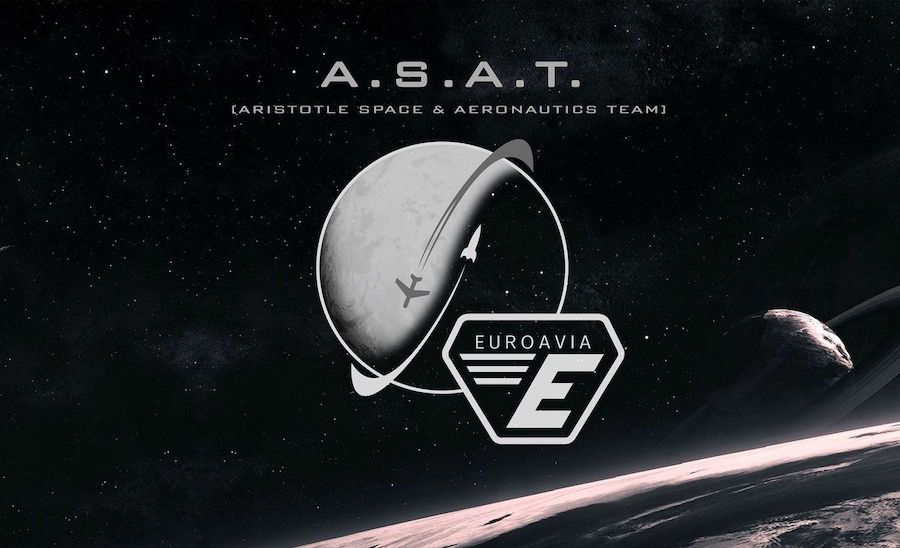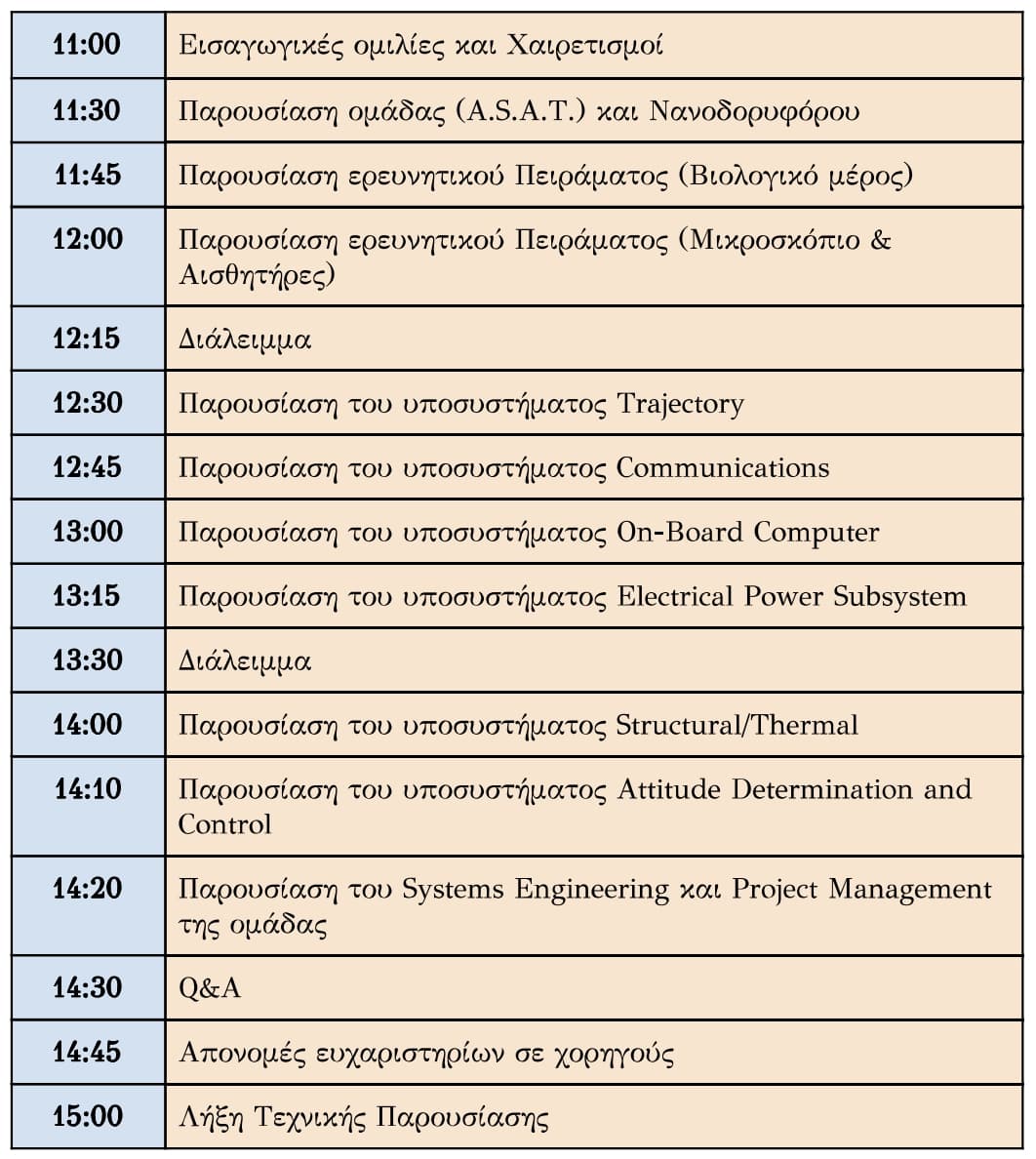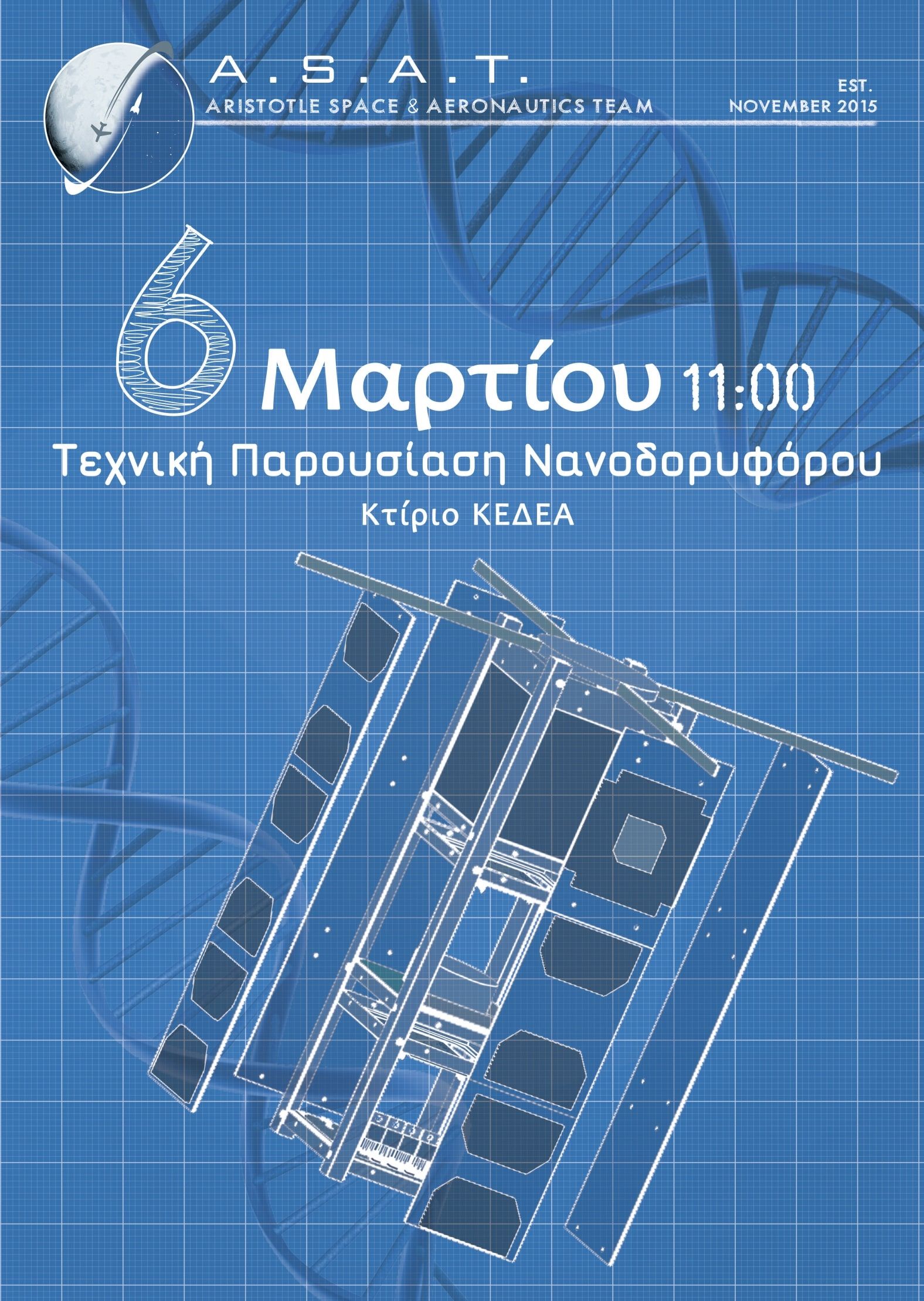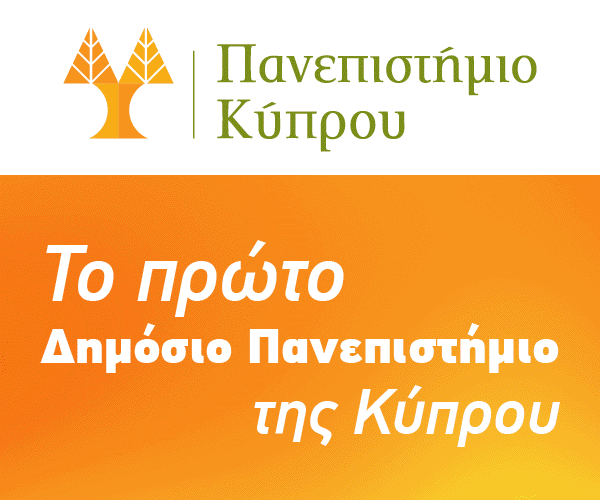CubeSat – Meet the ADCS Sub-team
Το AcubeSAT είναι έτοιμο να αφήσει τον Διεθνή Διαστημικό Σταθμό και να ξεκινήσει το μεγάλο ταξίδι του γύρω από τη γη. Ωχ όχι, μια δυσλειτουργία στον εκτοξευτή έκανε το cubesat να περιστρέφεται με υπερβολικά μεγάλη ταχύτητα. Είναι το AcubeSAT καταδικασμένο; Ήρθε κι όλας το τέλος της αποστολής του;
Όχι. Το ADCS είναι εδώ. Ο ρόλος του είναι όχι μόνο να σταθεροποιήσει τη γωνιακή ταχύτητα του δορυφόρου κατά τη διάρκεια του de–tumbling mode, αλλά και να προβλέψει τον προσανατολισμό του και να παρέχει ακριβή έλεγχο της συμπεριφοράς του κατά τη διάρκεια όλης της αποστολής. Λαμβάνοντας υπόψιν το μέγεθος ενός cubesat, όπως επίσης και τους περιορισμούς σε βάρος, κατανάλωση ενέργειας και budget, η επιλογή και η συναρμολόγηση των υλικών γίνεται πραγματικά δύσκολη.

Earth-centered inertial (ECI) and a nadir-pointing satellite
Αλλά γιατί χρειαζόμαστε να έχουμε τόσο ακριβή έλεγχο της συμπεριφοράς του cubesat; Η «συμπεριφορά» (attitude) του δορυφόρου θα πρέπει να σταθεροποιηθεί και να ελεγχθεί σύμφωνα με κάποιες προδιαγραφές, που υπαγορεύονται από άλλα υποσυστήματα. Ας υποθέσουμε ότι η κεραία του δορυφόρου απαιτείται να «βλέπει» τον σταθμό στο έδαφος με μικρή απόκλιση στη γωνία, έτσι ώστε τα αποτελέσματα του πειράματος να στέλνονται άμεσα πίσω στη γη: είναι δουλειά του ADCS να σιγουρευτεί ότι η σωστή πλευρά του δορυφόρου θα κοιτάει τη γη με τη σωστή γωνία, τη σωστή στιγμή. Ας μη ξεχνάμε ότι κάθε δευτερόλεπτο μεταφοράς δεδομένων, κάθε λεπτό φόρτισης των φωτοβολταϊκών μετράει· δεν είναι μόνο θέμα ακριβούς προσανατολισμού, είναι και θέμα timing!
Αλλά στ’ αλήθεια, πώς το ADCS τα καταφέρνει όλα αυτά; Ας αποκωδικοποιήσουμε το όνομά του: Attitude Determination and Control System. Συλλέγοντας δεδομένα από διάφορους αισθητήρες και συγκρίνοντάς το με διαφορετικά μοντέλα, το ADCS εκτιμά τον προσανατολισμό του δορυφόρου σε σχέση με ένα αδρανειακό σύστημα αναφοράς (το Earth-centered inertial (ECI) για παράδειγμα). Με άλλα λόγια, ο δορυφόρος πρέπει να απαντήσει πρώτα στην ερώτηση «Πού είμαι;», έτσι ώστε να μπορεί μετά να απαντήσει στην ερώτηση «Πού θέλω να πάω;». Εδώ μπαίνει και το κομμάτι ελέγχου (control) του υποσυστήματος. Χρησιμοποιώντας Θεωρία Ελέγχου και Kalman Filters, μπορούμε να ελέγξουμε τους actuators του cubesat, και να αλλάξουμε τον προσανατολισμό του σύμφωνα με τις ανάγκες άλλων υποσυστημάτων (ακριβές «pointing» της κεραίας στον σταθμό εδάφους, πετυχαίνοντας ταχύτερη και πιο αξιόπιστη μετάδοση δεδομένων κτλ.).

Magnetorquer με δυνατότητα περιστροφής σε 3 άξονες
Οι κύριοι actuators που θα χρησιμοποιηθούν ονομάζονται magnetorquers (βλέπε φωτογραφία), στην ουσία είναι ηλεκτρομαγνητικά πηνία· δημιουργούν μαγνητικά δίπολα που, αλληλεπιδρώντας με το μαγνητικό πεδίο της γης, δίνουν τις κατάλληλες ροπές(δράση-αντίδραση) για να περιστραφεί ο δορυφόρος. Όσον αφορά τους αισθητήρες, οι sun sensors μας δίνουν πληροφορίες σχετικά με τη θέση του ηλίου, τα magnetometers μετρούν το μαγνητικό πεδίο της γης σε κάθε θέση του δορυφόρου, το GPS μας παρέχει τιμές υψομέτρου, γεωγραφικού πλάτους και μήκους, ενώ το γυροσκόπιο παρατηρεί αλλαγές στη σχετική γωνιακή ταχύτητα

Η υποομάδα του ADCS αποτελείται από 4 μέλη: την Ανθή, τον Γιάννη, τον Ιάσονα και τον Νίκο. Όλοι τους είναι προπτυχιακοί φοιτητές στο τμήμα Ηλεκτρολόγων Μηχανικών και Μηχανικών Υπολογιστών στο Αριστοτέλειο Πανεπιστήμιο Θεσσαλονίκης. Έχοντας ήδη αποφασίσει το είδος των αισθητήρων και actuators που θα χρησιμοποιηθούν, η υποομάδα αντιμετωπίζει τώρα το πρόβλημα της μοντελοποίησης των μηχανικών εξαρτημάτων χρησιμοποιώντας λογισμικό (συμπεριλαμβανομένου του MATLAB και του Simulink). Μετά από αυτό, τα προβλήματα του Data Fusion και του Kalman Filtering θα μπουν στην «εξίσωση».

CubeSat – Meet the Structural and Thermal Subsystem
Structural
Κάθε κατασκευαστής υπεύθυνος για το σχεδιασμό του δομικού σκελετού ενός δορυφόρου πρέπει να εξασφαλίσει ότι αυτός θα είναι σε θέση να αντέξει το σύνολο των φορτίων που θα του επιβληθούν καθ’όλη τη διάρκεια της αποστολής.
Τι εννοούμε όμως όταν αναφερόμαστε σε φορτία; Παρ’ όλο που στο απόλυτο κενό του διαστήματος δεν υπάρχουν τριβές για να καταπονήσουν τη δομή του δορυφόρου, οι ακραίες θερμοκρασιακές μεταβολές λόγω της συνεχούς εναλλαγής της τροχιάς του ανάμεσα στην ηλιοφάνεια και την σκιά καθιστούν αναγκαία την χρήση υλικών ικανών να διατηρούν το μέγεθος και το σχήμα τους. Επιπλέον, αυτό που πρέπει να ληφθεί κυρίως υπόψιν είναι οι εξαιρετικά έντονες δυνάμεις και ταλαντώσεις που αναπτύσσονται κατά την εκτόξευση με τον πύραυλο που θα θέσει σε τροχιά τον δορυφόρο. Για να μιλήσουμε με αριθμούς, οι δυνάμεις αυτές μπορούν να φτάσουν σε επίπεδα έως και δεκαοκταπλάσια της δύναμης της βαρύτητας! Γίνεται αντιληπτή λοιπόν η ανάγκη για δομές με ακεραιότητα σε υψηλές τάσεις και εφελκυσμούς.

Preliminary Design of the nanosatellite’s structure
Η ομάδα του Structural διασφαλίζει την εν λόγω ακεραιότητα της κατασκευής του CubeSat μέσα από ένα λεπτομερέστατο σχεδιασμό. Κάθε εξάρτημα αλλά και ο σκελετός του νανοδορυφόρου συνολικά ελέγχονται μέσω στατικών αναλύσεων (static analysis) και αναλύσεων αντοχής σε ταλαντώσεις (vibration analysis). Σε περίπτωση που κάποιο στοιχείο αστοχήσει, επανασχεδιάζεται και αναδιαμορφώνεται αντίστοιχα.
Μια ακόμα υποχρέωση του υποσυστήματος είναι η ρύθμιση της συνολικής μάζας και κατανομής αυτής στο σώμα του δορυφόρου, τοποθετώντας σωστά τα τεμάχια που τον αποτελούν. Το συνολικό βάρος του CubeSat δεν πρέπει να υπερβαίνει τα 4 κιλά, ενώ το κέντρο βάρους του πρέπει να βρίσκεται σε μέγιστη απόσταση 10-15 χιλιοστών από το γεωμετρικό του κέντρο. Τα παραπάνω είναι αναγκαία ώστε να αποτραπούν η υπερφόρτωση του εκτοξευτήρα με επιπλέον βάρος και η ανεξέλεγκτη περιστροφή του CubeSat μετά την απελευθέρωσή του στο διάστημα.
Η ομάδα του Structural αποτελείται από τον Βασίλη και τον Χρήστο, και οι δυο προπτυχιακοί φοιτητές του τμήματος Μηχανολόγων Μηχανικών του ΑΠΘ, οι οποίοι το παρόν χρονικό διάστημα ασχολούνται με τη μελέτη καινούργιων αναλύσεων για τη βελτίωση της αντοχής της κατασκευής.
Thermal
Στο απόλυτο κενό του διαστήματος, οι τρόποι με τους οποίους διαδίδεται η θερμότητα αλλάζουν. Η έλλειψη των ατμοσφαιρικών σωματιδίων αποκλείει την συναγωγή ως τρόπο μετάδοσης της θερμότητας, οπότε μένει μόνο η ακτινοβολία. Κατά περίπου τα ⅔ της κάθε τροχιάς το CubeSat θα βρίσκεται υπό το φως του Ήλιου, με αποτέλεσμα να αρχίζει να θερμαίνεται. Επομένως θα πρέπει με κάποιο τρόπο να μοιραστεί η θερμότητα σε όλο το CubeSat και να ακτινοβοληθεί στο διάστημα τυχόν πλεόνασμα θερμότητας. Αν κάτι τέτοιο σας ακούγεται εύκολο, σκεφτείτε την ακόλουθη αναλογία: Το κινητό σας θα πρέπει να λειτουργεί όταν η μία πλευρά του βρίσκεται μπροστά από ένα ζεστό φούρνο ενώ η άλλη πλευρά εκτίθεται στο ψυχρό υγρό άζωτο.
O επιπλέον περιορισμός που απαιτεί η βιολογική αποστολή για την οποία η θερμοκρασία δεν θα πρέπει να ξεπεράσει τους 30 βαθμούς Κελσίου σε συγκεκριμένα σημεία ώστε να επιβιώσουν οι μύκητες, δυσχεραίνει περαιτέρω την δουλειά της υποομάδας του Thermal. Επιπλέον, διαφορετικά εξαρτήματα έχουν διαφορετικά όρια θερμοκρασίας τα οποία πρέπει να τηρηθούν για να παραμείνει λειτουργικό το CubeSat στο διάστημα. Για αυτό το λόγο η υποομάδα του Thermal θα επιλέξει τα κατάλληλα θερμαντικά σώματα και μονωτικά υλικά (MLI blankets). Για να γίνουν τα παραπάνω με σωστό τρόπο, θα πρέπει επίσης να εκτελεστεί η λεγόμενη θερμική ανάλυση η οποία επιβεβαιώνει την καλή λειτουργία του δορυφόρου στο διάστημα. Σε μελλοντικό χρόνο η υποομάδα του Thermal θα είναι υπεύθυνη για την διεξαγωγή των δοκιμών θερμικού κενού (thermal vacuum tests), οι οποίες θα επιβεβαιώσουν και πειραματικά την αντοχή του δορυφόρου στις αντίξοες αυτές συνθήκες.

Structural/Thermal team (Dimitris, Nikos, Vasilis, Vasiliki)
Η υποομάδα του Thermal αποτελείται από τρία μέλη, την Βασιλική, τον Δημήτρη και τον Νίκο, και οι τρεις προπτυχιακοί φοιτητές του Τμήματος Μηχανολόγων Μηχανικών του Αριστοτελείου Πανεπιστημίου Θεσσαλονίκης. Αυτή την περίοδο ο Δημήτρης ασχολείται με την ανάλυση της μόνιμης κατάστασης (steady state analysis), η οποία θα χρησιμοποιηθεί για να αποφασιστούν οριστικά τα μονωτικά υλικά που θα χρησιμοποιηθούν. Η Βασιλική και ο Νίκος ασχολούνται με μια πρώτη θερμική ανάλυση του νανοδορυφόρου, με την οποία θα γίνει περαιτέρω κατανοητή η θερμική καταπόνηση του δορυφόρου.
CubeSat – Meet the OBC Subsystem
Θα αφήνατε ανοιχτό τον υπολογιστή σας για μια ολόκληρη εβδομάδα; Για 8 μήνες ενώ είστε 400 χλμ. μακριά; Αν και οι ηλεκτρονικές συσκευές ποτέ δε θα χρειαστεί να μείνουν ενεργοποιημένες για τόσο μεγάλο διάστημα, ένας δορυφόρος θα πρέπει να αντέξει τη μοναξιά του σύμπαντος για πολύ καιρό – δεν γίνεται απλά να κάνει restart όταν χαλάσει!
Αυτή είναι μια από τις πολλές αρμοδιότητες του υποσυστήματος OBC (On Board Computer – Υπολογιστής “επί σκάφους”). Θα μπορούσαμε να πούμε πως το OBC είναι ο “εγκέφαλος” του δορυφόρου – ο υπολογιστής υπεύθυνος για όλες τις ενέργειές του, από το να διαβάζει αισθητήρες θερμοκρασίας και να ελέγχει αν τα πάντα λειτουργούν όπως πρέπει, μέχρι το να γράφει δεδομένα στη μνήμη και να καταγράφει τα σφάλματα.
Βέβαια, με τη λέξη υπολογιστής, δεν αναφερόμαστε σε κάτι σχετικό με τους υπολογιστές που υπάρχουν σε κάθε σπίτι! Στους τελευταίους υπάρχουν χιλιάδες ακριβά κομμάτια, σχεδιασμένα ώστε να δίνουν τις πιο γρήγορες επιδόσεις. Αντιθέτως, στο CubeSat μας θα σχεδιάσουμε ένα λεγόμενο “ενσωματωμένο σύστημα” με στόχους τη μικρή κατανάλωση ισχύος και την υψηλή αξιοπιστία. Το OBC θα ξοδεύει λιγότερο από το 0.1% της ισχύος ενός οικιακού υπολογιστή, και θα έχει λιγότερα από 10 MB μνήμης RAM. Αν και αυτό θεωρείται ελάχιστο στον 21ο αιώνα, θα είναι παραπάνω από αρκετό για να διαχειριστεί όλες τις λειτουργίες του δορυφόρου!

Αριστερά: Προγραμματισμός του CubeSat mockup. Δεξιά: Ένας από τους μικροελεγκτές που θα χρησιμοποιηθούν στο δορυφόρο.
Το OBC θα αποτελείται από ένα δίκτυο 4 ή περισσότερων μικροελεγκτών (ένας για κάθε υποσύστημα) που θα βασίζονται στη γνωστή αρχιτεκτονική ARM, και θα χρησιμοποιούν την τεχνολογία CAN για να επικοινωνούν μεταξύ τους. Γίνεται προγραμματισμός τους στις γλώσσες C και C++, ενώ το λογισμικό θα τρέχει στο λειτουργικό σύστημα FreeRTOS. Αυτό δε μοιάζει με τα γνωστά μας Windows και Linux, αλλά είναι ένα λειτουργικό σύστημα πραγματικού χρόνου. Δεν έχει κάποιο όμορφο γραφικό περιβάλλον, αλλά σχεδιάστηκε για να είναι ταχύ και αξιόπιστο χωρίς να κολλάει. (Δεν υπάρχει χώρος για Μπλε Οθόνες του Θανάτου εδώ!)
Μερικές από τις τυπικές αρμοδιότητες του OBC θα είναι:
- Ανάγνωση δεδομένων από αισθητήρες (όπως θερμοκρασίας, πίεσης, επιτάχυνσης, …)
- Αποθήκευση δεδομένων σε κάρτες μνήμης SD
- Ανάγνωση και εκτέλεση εντολών που στέλνονται από τη Γη
- Αυτόματη εκτέλεση προγραμματισμένων εντολών
- Έλεγχος για τυχόν σφάλματα στα υποσυστήματα του δορυφόρου
- Επεξεργασία και συμπίεση δεδομένων
- Ενημέρωση του κώδικα των μικροελεγκτών, σε περίπτωση που χρειάζονται διορθώσεις μετά την εκτόξευση
- Προετοιμασία της τηλεμετρίας του δορυφόρου για αποστολή στη Γη από το υποσύστημα Communications

Προγραμματισμός μικροελεγκτών σε γλώσσα C
Όπως είχαμε αναφέρει, το διάστημα είναι ένα αφιλόξενο μέρος, οπότε πρέπει να είμαστε έτοιμοι για οτιδήποτε που μπορεί να πάει στραβά στην τροχιά. Στην Τεχνική Παρουσίαση της 6ης Μαρτίου, θα έχετε τη δυνατότητα να μάθετε για πολλές από τις τεχνικές που χρησιμοποιούμε με στόχο την κατασκευή ενός αξιόπιστου, έτοιμου για πτήση συστήματος που ικανοποιεί τις απαιτήσεις εκτόξευσης: Πολλές δοκιμές & τεκμηρίωση, έλεγχοι κώδικα, στατική καταχώρηση μνήμης, προστασία σε hardware, διεθνή space standards (ECSS).

On-Board Computer Team (Thodoris, Dimitris, Konstantinos, Grigoris, Thanasis)
Η υπο-ομάδα του OBC αποτελείται από 5 μέλη, προπτυχιακούς φοιτητές του Αριστοτελείου Πανεπιστημίου Θεσσαλονίκης. Ο Κωνσταντίνος, ο Θοδωρής και ο Γρηγόρης βρίσκονται στο Τμήμα Ηλεκτρολόγων Μηχανικών & Μηχανικών Υπολογιστών, ο Δημήτρης στο Τμήμα Φυσικής, και ο Θανάσης στο Τμήμα Πληροφορικής. Αυτήν τη στιγμή, ο Κωνσταντίνος σχεδιάζει ένα λογικό κύκλωμα σε FPGA για διόρθωση σφαλμάτων σε δεδομένα, ο Θοδωρής αναπτύσσει κώδικα για τη μέτρηση του χρόνου εντός του CubeSat, ο Γρηγόρης γράφει κώδικα για τη σύνδεση των ασύρματων πομποδεκτών με τους μικροελεγκτές, ο Θανάσης αναπτύσσει ένα σύστημα που πραγματοποιεί αυτόματες ενέργειες που προκαλούνται από άλλα συμβάντα, και ο Δημήτρης δουλεύει στον χρονο-προγραμματισμό εντολών που στέλνονται από τη Γη.
CubeSat – Meet the Science Unit
Can humanity develop sustainable and autonomous colonies beyond Earth? Will we ever traverse the interstellar medium with the same trivial demeanor as we do the Atlantic ocean nowadays?
Landing on the moon as part of the Apollo program sparked our imagination and enthusiasm about the possibility of becoming an interplanetary society. Exciting though it may be, this possibility brings about two questions of paramount importance; what will it do to our body and how will we utilize the hostile extraterrestrial environment to become independent of Earth?
The goal of the Science Unit subsystem is to make a small step towards answering those questions. We are designing an experiment that will investigate, in unprecedented detail, the effect that travelling in space, even as close as around the Earth, confers on a microscopic level on living cells. We are studying eukaryotic cells, the type of cells that yeast, plants, animals and us are made of, hoping to uncover conserved cellular responses to environmental stimuli that can shed light on how human cells will behave when exposed to similar conditions.

Image 1: Rodent Research-1 Hardware platform aboard the International Space Station. Source: NASA
Yeast cells are put under the microscope, because in addition to their aforementioned potential to illuminate molecular events common to human cells, they have been invaluable tools for the production of a plethora of useful substances on Earth and show great promise to be in space as well. These range from biofuels and polymers to pharmaceutical substances for astronauts and more. Therefore, it is crucial to understand and quantify their behavior in space if we hope to use them in future missions.
So why hasn’t it been done before? The problem is fitting an entire laboratory inside a small cube 10 cm on each side. At the heart of the experiment lies the substitution of the usual laboratory sensors with biological systems designed and constructed to perform a similar task inside the cells themselves. And, unlike the way cells are usually cultured, we are utilizing a device, namely a microfluidic chip, that allows us to grow and observe a single cell, or rather multiple single cells.

Image 2 (Left): Designing the biological “sensors” that will be integrated in the yeast cells on SnapGene | Image 3 (Right): S. cerevisiae membrane proteins visualized by RFP and GFP (red/green fluorescent protein). Source: Saccharomyces Genome Database (SGD)

The Science Unit, as of now, consists of 3 members, all of whom are undergraduate students at the Aristotle University of Thessaloniki. Asteris and Charis are studying Medicine, while Stavros is studying Electrical & Computer Engineering. Currently, Asteris is exploring different chip architectures for the culture of cells, Charis is developing the genetic circuits to be integrated in the candidate yeast strains while Stavros is designing the PCB and finalizing work on the various monitoring and control sensors for it. In parallel, the team is collaboratively developing a novel miniaturized fluorescence microscope.
CubeSat – Meet the Systems Engineering
During the design and testing process of any system, mistakes and shortcomings are to be expected. However, if these problems are not addressed and fixed before the delivery of the system, there is a high chance for a complete failure of the system which can even result to the loss of human lives. Many examples can be found throughout history. RMS Titanic was the biggest ship of its time. Titanic had poor quality control in the manufacture of the wrought iron rivets. When the ship collided with the iceberg, many rivets failed and whole sheets of the hull became unattached. An insufficient number of lifeboats was a requirements development failure.

RMS Titanic. More than 1500 people died due to the sinking.
Systems on our planet are not the only ones to have suffered such problems. Most notable example is the maiden flight of Ariane 5 in 1996. For the brand-new Ariane 5 rocket, the engineering teams reused specifications and software from the older Ariane 4 rocket without testing in-depth if the old software met the new requirements. The failure to discover this problem led to a catastrophic failure during the first flight of Ariane 5.

The maiden flight of Ariane 5, which resulted in a complete loss of the mission.
Many more examples can be found. It is apparent that problems can appear in any phase of a project and most of the times there is no simple solution to fix them, due to the complexity of the system. However, we can identify where most problems originate from. Firstly, you might have poor communication between the members of a project. Another common mistake is forgetting good practices and taking shortcuts based on unjustified experience or habits. It is therefore critical to have someone responsible to overview the design process during all times in order to ensure the performance of the system while keeping the cost and risk at a minimum. There is also a need to do all of that in a timely manner, maintaining the given schedule.

A screenshot of OCDT, the tool which our team uses for information sharing.
Systems Engineering (SE) has been a part of our design process for a long time, but only lately has been separated into a separate subsystem. This decision has been made in order to further assist the design and testing process of the entire CubeSat and increase the reliability of our system. The Systems Engineering team is mainly tasked with assisting the rest of the sub-teams with problems during the design and solving potential design conflicts when they arise. The SE team also ensures compatibility with specific space standards and defines the testing procedures for the entire CubeSat in cooperation with the rest of the sub-teams. The SE team is responsible for holding the weekly concurrent design meetings, where the entire CubeSat team gives updates on the design of the nanosatellite. Information sharing for all CubeSat members is done via the Open Concurrent Design Tool (OCDT), an open source program developed by ESA. The Systems Engineering team is responsible for the maintenance and upkeeping OCDT as well.

Systems Engineering Team (Anastasis, Giannis)
The Systems Engineering sub-team consists of two members, Anastasis, an undergraduate physics student, and Giannis, an undergraduate Electrical Engineering student. The team possesses a deep knowledge of every single subsystem of our CubeSat and is capable of solving problems when they arise. In addition, both members have been trained in relevant ESA Academy training courses which further assists their mission: Anastasis participated in the CubeSats Concurrent Engineering Workshop 2019 and Giannis participated in the Space Systems Engineering Training Course 2018.
CubeSat – Meet the Communications Subsystem
On October 4, 1957, the first ever artificial satellite in history, Sputnik 1, was launched and set to orbit, transmitting radio waves which contained information on the ionosphere’s electron density.
Audio PlayerSputnik 1 signal
From those seemingly simple beacons of 1957, the evolution of space missions has gifted us with photos of other planets, like the ones captured by Mars Rover Opportunity (which officially concluded its 15-year long service in space exploration a few days ago).

Surface of Mars, Source: NASA
What would a space mission be without a way to communicate, without a “voice”? What does it take to receive that craved “beep”, or a photo of poor resolution compared to the latest smartphone, but so important to science? This is exactly the point where the telecommunications team takes over.
The Communications subsystem consists of the space and the ground segment. The space segment refers to the hardware and software involved in the transmission and reception of signals, namely the antenna or antennas and the printed circuit board where the processing of the incoming and outgoing data takes place on board the satellite. The ground station is the system which performs the akin procedure on earth. The following types of data are exchanged between the space and ground segment:
- Telemetry: Diagnostic information regarding the state of the satellite
- Telecommand: Commands from the ground station to the satellite
- Payload: Scientific data stemming from the experiment
To monitor AcubeSAT’s experiment, a considerable volume of photographs is required. The limited amount of contact time with the ground station in Low Earth Orbit, as well as the miniscule power available due to the spacecraft’s small size pose a challenge for the achievement of the high data rate necessary to acquire the scientific data. For the aforementioned reasons, we are designing our own more directive patch antenna with 2.4 GHz (S band) nominal operation.

Draft 3D model and radiation pattern of the patch antenna
Concurrently, perhaps the most crucial issue for the subsystem is making sure to be as efficient as possible. Given that permanent contact with the satellite marks the end of the mission, Comms will also include a deployable dipole antenna, which will permit nonstop communication with the Cubesat, independent of its orientation. Interference from other signals, Doppler shift and the effect of the atmosphere on the radio link are only few of the factors that must also be considered.
To cope with these requirements the members of our sub-team study, apart from the corresponding bibliography, international space standards (CCSDS, ECSS), which define the best parameters for our kind of mission (modulation type, communication protocols etc.).

Communications Team (Milton, Electra, Afroditi, Giorgos)
Our subsystem comprises four members, Electra, Aphrodite, Milton, undergraduate Electrical Engineering students in the Aristotle University of Thessaloniki, and George, a Telecommunications postgraduate student in the University of Crete. For the time being, Electra is evaluating communication protocols, Aphrodite is under the process of designing our patch antenna, Milton is programming the transceiver to be used on the 2.4 GHz radio, and George is working on the ground station’s software.
CubeSat – Meet the Trajectory Subsystem
Performing a mission in space without question requires a rocket and a satellite. Using the rocket, the satellite is placed into orbit around our planet and remains in space until the mission is performed or the satellite reenters the atmosphere. When that, happens it disintegrates by the high temperatures reached due to friction with atmospheric particles. But you must be careful: If the satellite is placed in a low altitude, it will reenter the atmosphere faster than expected and you won’t have enough time to complete the mission. If you choose a higher altitude, the orbital lifetime will be extended to many years, increasing the probability of creating new space debris. What would you do?








 ΔΕΙΤΕ ΠΡΩΤΟΙ ΟΛΑ ΤΑ ΝΕΑ ΤΟΥ ΦΟΙΤΗΤΙΚΑ ΝΕΑ ΣΤΟ GOOGLE NEWS
ΔΕΙΤΕ ΠΡΩΤΟΙ ΟΛΑ ΤΑ ΝΕΑ ΤΟΥ ΦΟΙΤΗΤΙΚΑ ΝΕΑ ΣΤΟ GOOGLE NEWS
